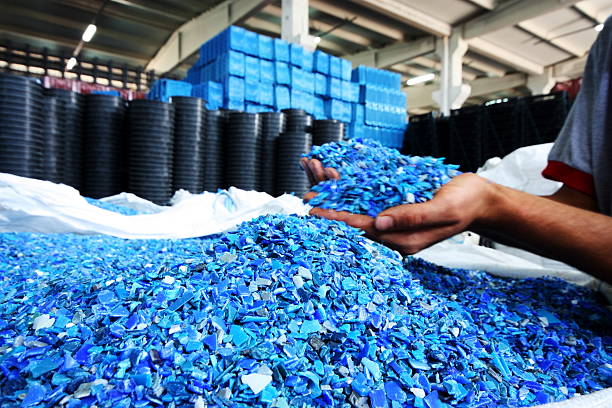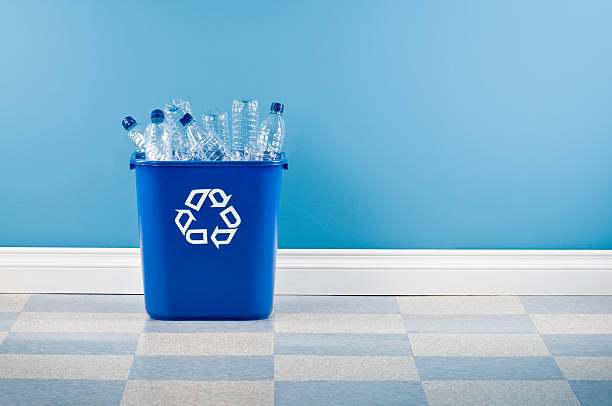Smart waste management eventually creates an active engagement towards the improper disposal of waste. The plastic waste footprint needs to be eradicated to pursue a cleaner and greener planet. “Today’s actions are tomorrow’s progression.” Every action and incident creates waste. The average deposition of waste per day is about 3.5 million tons of plastic waste (which can be reused and recycled with proper effective measures) and other types of solid waste.
What are recycling and re-utilization?
To preserve nature’s ultimate resources, we need to reuse and recycle plastic waste, which causes a great impact on our landfills. The recycling process is the collection of waste materials that have not been used and reclaiming them for use again. Waste elements are segregated, sorted, and involve multiple processes to reuse them again. Conventional components that are fit for reusing and recycling are secluded separately. Some of the recycled products are wood, paper, glass, metal, Industrial scraps, etc.
One-time use products should be avoided to prevent excessive waste deposition in landfills. In order to prevent the propagation of waste, it should be eradicated at the beginning. Recycling takes several methods to bring out new products from unused materials. Plastics should be retreated and recycled with more concern as it takes decades to degrade. Recycling plastics helps perpetuate the exhaustion of finite natural resources like natural gas, oil, coal, phosphorous, rare earth elements, and freshwater.
Plastic Recycling
Plastic recycling process is extremely effective and efficient. The waste streams are taken apart at the highest level of technology and quality, which results in a recycled product of the highest quality. Plastic is a versatile material and can be used to create lots of products.
Plastic recycling helps our world to create a world without waste.Plastic recycling creates a circular motion of plastics to revolve around without getting immersed into the landfills.

With the current state of our environment, more individuals are taking action to contribute to the world – and join the plastic recycling movement.
How are plastics made, and where do they come from?
The origin of plastics has outpaced its footprint since the 1950s. Because of its lightweight and portable specs majority of the industries took over plastics as their outbuild raw materials. As plastics can acquire any shape and size, it looked easy for the manufacturers and consumers to handle and fit the plastics into any product or materials. Plastics have created its brand throughout the super bowl of the world in recent times for its compactness and multi-functional aspects.
Thermoplastics and Thermoset or thermosetting plastics are the two most widely used plastics globally.
Thermoplastics are used for their softness and less rigidness, as the plastics made from thermoplastics easily acquire their original form on moderate heating.
Acrylic, Polyester, and Polyvinyl chloride (PVC) are some of the major chemical components used in Thermoplastics.
Thermosetting plastics are exerted for their hardness and durability. Thermosetting plastics cannot be altered or changed to any shape as the plastics have been moulded with hard plastic composure.
Plastics and their types:
1.Polyvinyl Chloride (PVC): Polyvinyl chloride is one of the unstable plastics made from oil and salt. Oil is crushed, and the extract of ethylene is taken. Chloride is obtained from the salt. The majority of the plastics are manufactured from PVC plastic, and the addition of plasticizers makes them flexible for multi-purpose functions.
2.Polyethylene (PE)
2.1 Low-density polyethylene (LDPE)
2.2 Medium-density polyethylene (MDPE)
2.3 High-density polyethylene (HDPE)
2.4 Ultra-high molecular weight polyethylene (UHMWPE)
3.Polypropylene (PP)
4.Polyterephthalate (PETE or PET)
5.Polystyrene or styrofoam (PS)
6.Polyurethane
7.Epoxy resins
8.Acrylonitrile butadiene styrene (ABS)
Click here to explore more about the evolution of plastics and get deeper into their types and applications.
What makes plastics recycling necessary?
Plastics cause major disasters to the soil and the earth because of their higher chemical complexity. Many toxic chemical compounds are composed in the production of plastics. As previously said, plastics take a decade to get decomposed completely. Plastics have become inevitable for daily use in the present day. Do you think all the plastic used in this world is decomposed or treated correctly? No, not. Most of the plastic used is thrown and trashed without proper knowledge and caution. Today’s plastic fabrication method includes using many natural resources such as cellulose, coal, natural gas, crude oil, etc. With a legitimate plastic waste treatment method, the consumption of natural resources can be reduced and stored up for future generations.
The term plastic is coined from the Greek word “plastikos“, which means an object can be moulded or brought into any shape. Plastics are made of a blockchain of polymers (such as polyethylene, poly terephthalate, and polyamide are types of additional components involved in the fabrication of plastics). Improper disposal of plastic waste leads to filling up the earth’s living space causing major land pollution. According to a recent study, “Recycling one ton of plastic waste can reduce six cubic yards of land space.”
Recycling waste is quite easy to achieve compared to locating and segregating plastics. Recyclers struggle most with locating plastic waste and transporting it to recycling centres for re-treatment.
Plastics cause the fertility of the soil when dumped into landfills. Plastics cause the emission of CO2 (Biogenic carbon-di-oxide), methane (CH4), and nitrous oxide (N2O), thus emitting toxic gases and harming the world with the exudation of greenhouse gas.
Process of reducing and recycling the plastic wastes
 With more than 50 types of plastics, recycling needs to be ensured vigorously to achieve cent percent recycling results. Recycling of plastics involves step-by-step processes that are,
With more than 50 types of plastics, recycling needs to be ensured vigorously to achieve cent percent recycling results. Recycling of plastics involves step-by-step processes that are,
Plastic waste collection →Storage→ sorting→bailing→ washing→ drying→ cutting→ shredding→ Pelletizing→ additional recycling processes → creating new products from waste plastics.
All the categories of plastics are recyclable with proper effective measures. Methods involved in recycling are as follows,
- Collection and consumerization: Collection of waste is one of the major challenges the recyclers face to consume the waste products into a useful one. Segregation of waste plays a vital role in treating plastic waste. Proper separation and collection of waste help make the recycling workflow easier and quicker.
- Industrial plastic re-utilization treatment: Polymers left unused in the production of plastics are re-treated and used as a raw material or subordinate material to produce another product. This process reduces the unused polymers or polymers left out unconsciously in the production of plastic processes that can be re-utilized in the market.
- Mechanical recycling process: Mechanical recycling process involves shredding, sorting, cleaning, washing, sieving, drying, granulation of plastic waste, and regeneration. In the past recycling methods, recyclers used a specific code, “Resin Identification code” (RIC), to sort the different polymers categories. At present automated methods are involved in the mechanical recycling methods that are spectrophotometric distribution technology, photometric clearance, Near Infrared (NIR) spectroscopic technique, and laser methods.
- Feedstock recycling: Feedstock or chemical recycling is the process of breaking down polymers into monomers from the collected plastic waste, also known as Depolymerization. This method helps remove toxic chemical compounds from the plastics, which causes the slow down of recycling processes. The feedstock conversion process includes the following steps,
- Pyrolysis
- Hydrogenation
- Gasification
- Thermal cracking
Hope of the future – Let’s Recycle
Recycling – is the only option left to rebuild the world without waste. Recycling unused waste reduces the space occupied by the waste landfills. Creates a circular economy and maintains the use of finite natural resources. Reduces the manufacturing cost and processes involved.
Let’s reduce the usage of Plastics! Reuse the plastics! Rebuild our planet greener!
